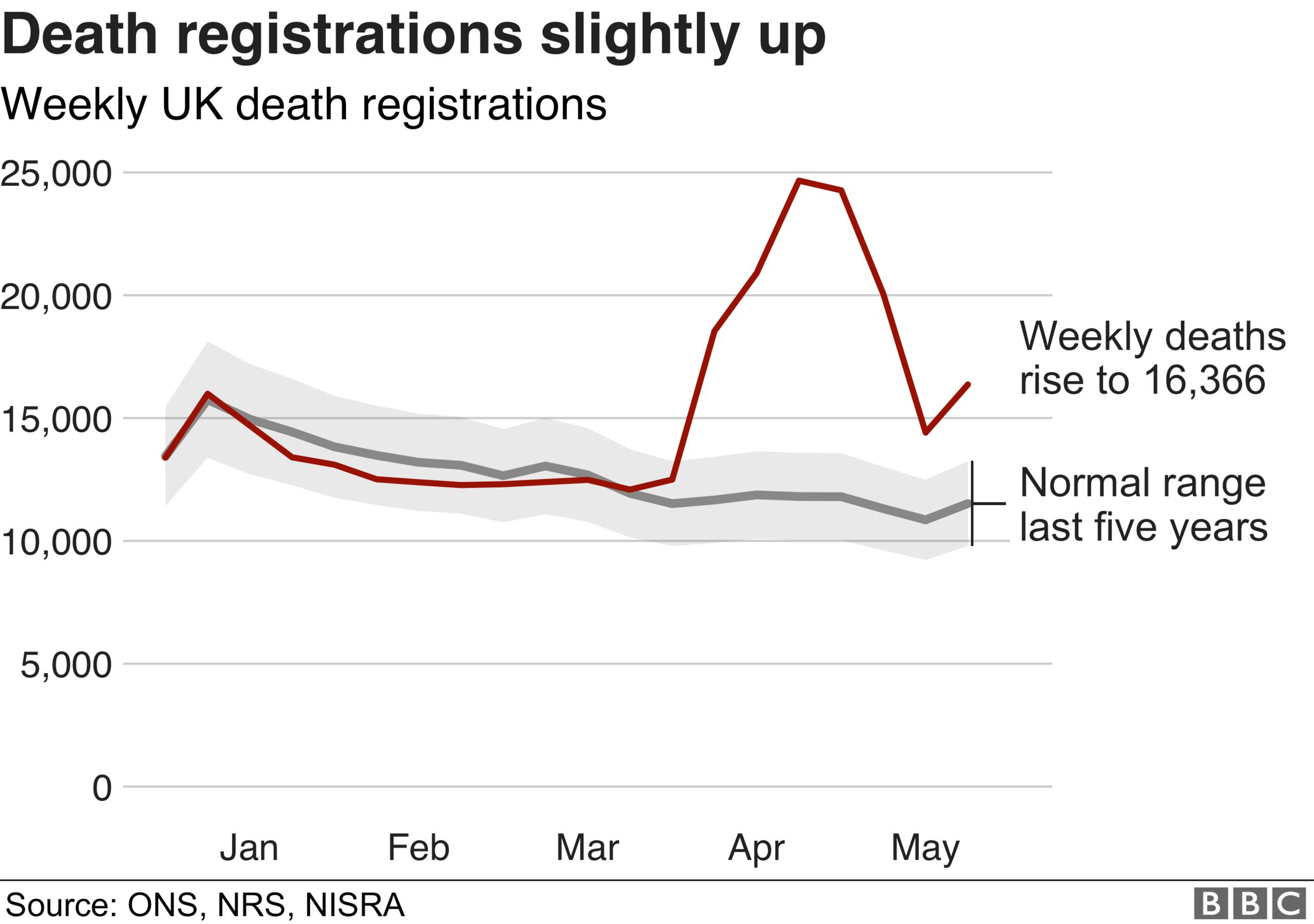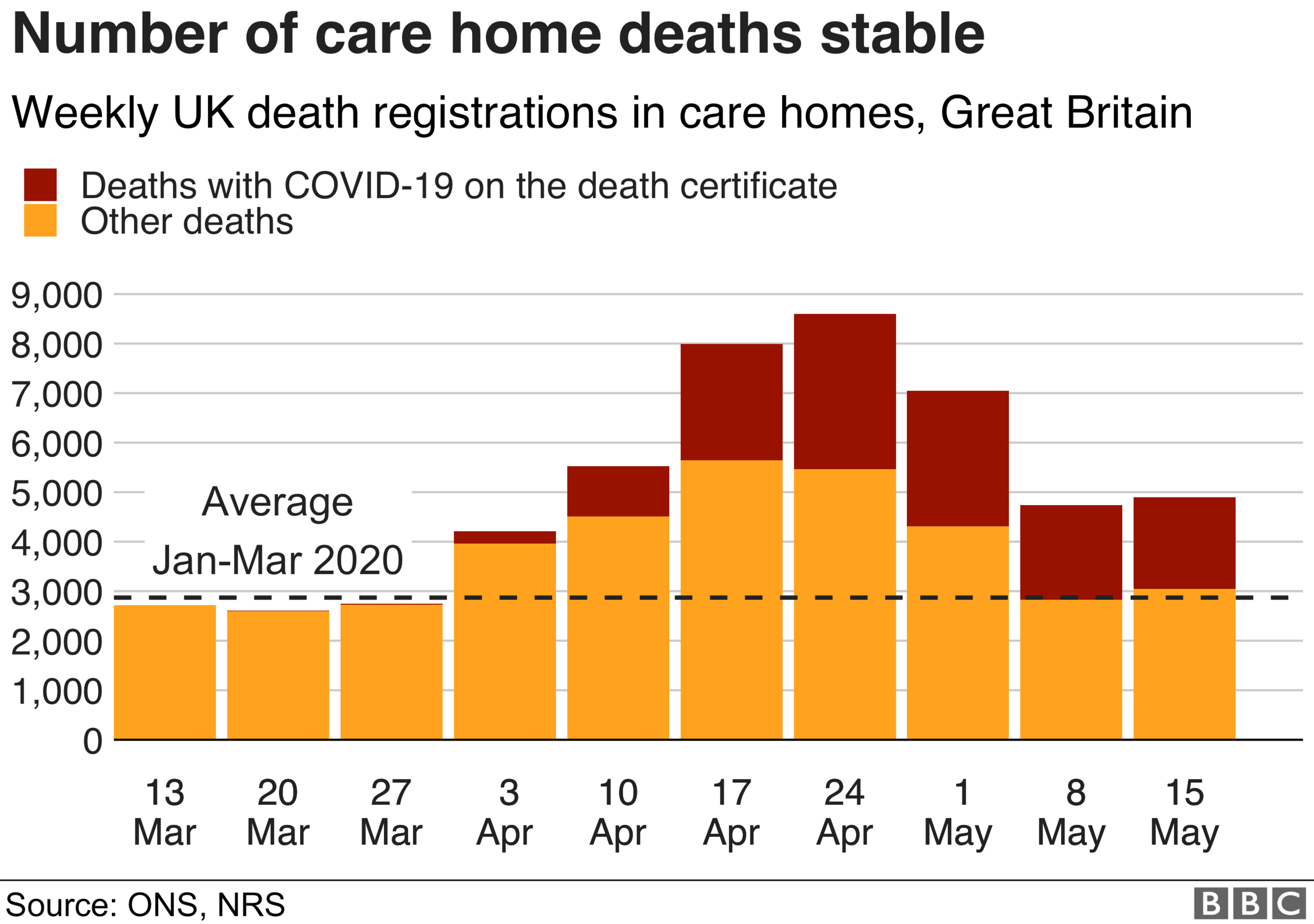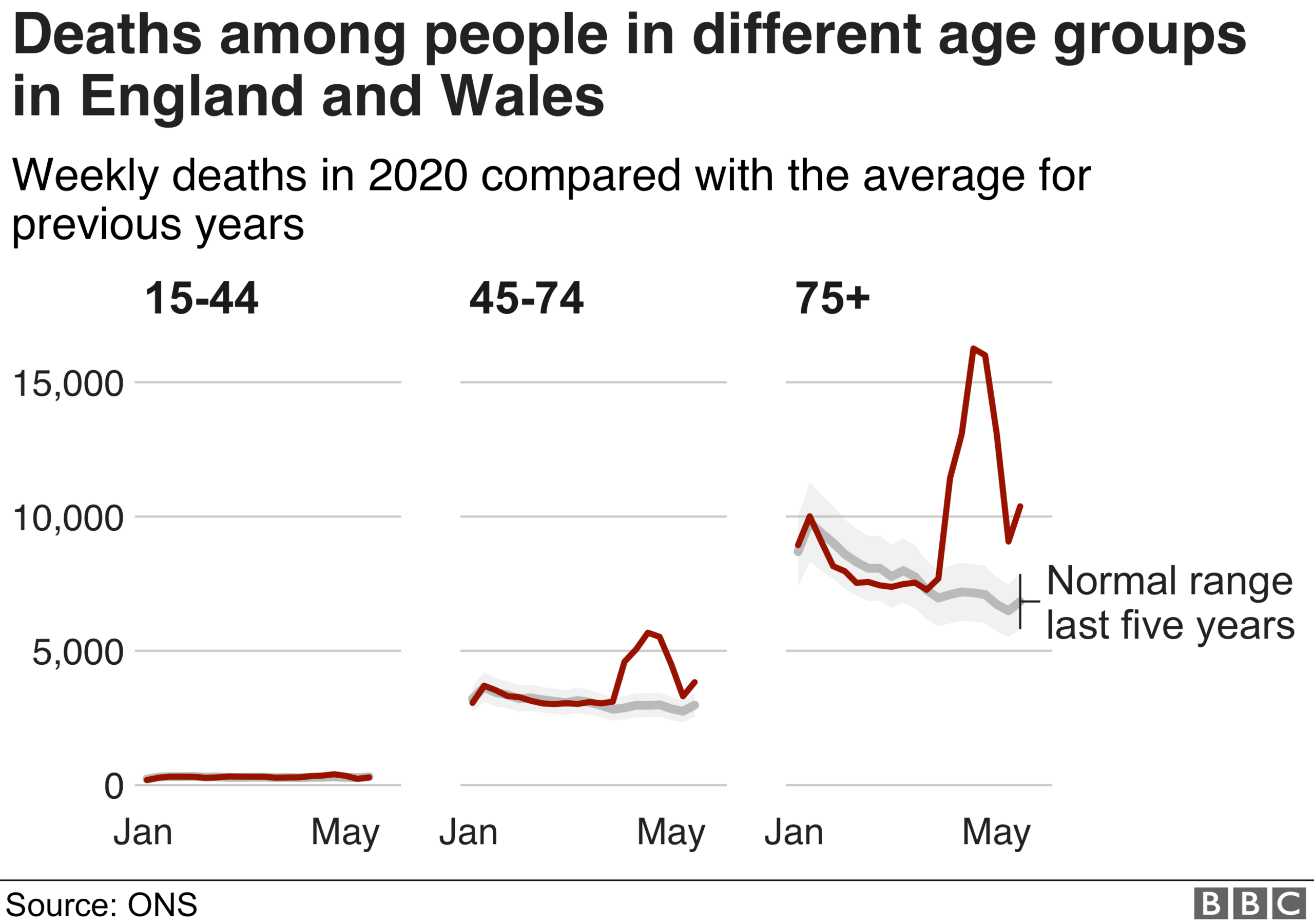Coronavirus deaths fall to six-week low
- Published
- comments

Coronavirus death registrations in the UK in the week to 15 May reached their lowest point since the beginning of April.
Between 11 and 15 May, there were 4,210 death registrations mentioning Covid-19, across the UK.
Down from 4,426 the previous week, it is the lowest weekly figure since the 3,801 for the week ending 10 April.
Coronavirus accounted for just over 25% of all deaths in the UK in the week to 15 May.
In the week to 17 April, when deaths from the virus reached their peak, this figure was just under 40%.
Lockdown measures were introduced across the UK on 23 March.
Death registrations mentioning Covid-19 fell in every setting in the week to 15 May.
But the total number of death registrations rose by 10%.

The bank holiday on Friday, 8 May, had meant deaths towards the end of that week had not been registered until at least 11 May, the Office for National Statistics (ONS) said.


Don't read too much into the increase in the total number of deaths registered.
Bank holidays interrupt the normal order of business. A Friday bank holiday like the one on 8 May pushes deaths into the following week, leading to the artificial extra dip and spike we see in this week's figures.
The number of Covid-19 registered deaths continues to fall, despite this extra lot of registrations from the previous week, and are falling in every setting.
So the trends are moving in the right direction - but any week with an extra 5,000 deaths can hardly be described as normal.
We are still seeing far more deaths each week than would be expected at this time of year - all of which are concentrated in the over 45s.

Also in the week to 15 May, 44% of coronavirus deaths in England and Wales were in care homes, compared with 23% at the peak, when the virus was far more active in the general population.
As in the general population, the total number of deaths in care homes rose slightly while the number of Covid-19 registered deaths fell.

The ONS's publication also looked at "excess deaths" in England and Wales - how many more were registered in the first 20 weeks of 2020 compared with the five-year average for the same time of year.
And an analysis of this data, by Prof Carl Heneghan, at the University of Oxford, found there was no additional risk of dying during that period for people under the age of 45.

Prof Heneghan said it wasn't until the 45-50 age band that excess deaths, over and above the five-year average, could be seen in the data.
And for some age groups, particularly the younger ones, death rates had been slightly below average as lockdown had reduced other risks, including road-traffic accidents, violence and other respiratory infections.
After the age of 45, however, the risk of dying had increased with age and had been significantly higher among the over-75s.
The ONS figures show in England and Wales there have been 53,960 excess deaths since the beginning of the pandemic.
The National Records of Scotland, meanwhile, said there had been 4,434 excess deaths between March 23 and May 17.
And the Northern Ireland Statistics and Research Agency said there had been 834 between March 21 and May 15.

RISK AT WORK: How exposed is your job?
SCHOOLS: When will children be returning?
EXERCISE: What are the guidelines on getting out?
THE R NUMBER: What it means and why it matters
LOOK-UP TOOL: How many cases in your area?
